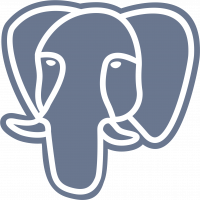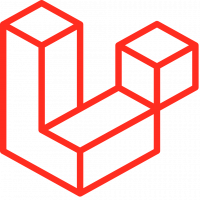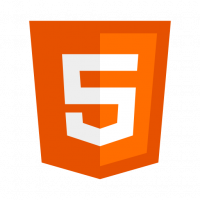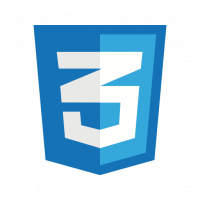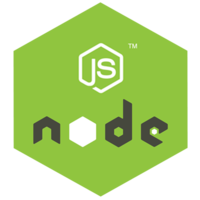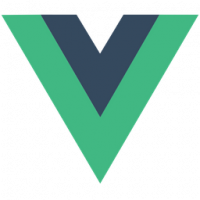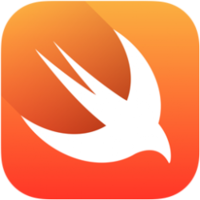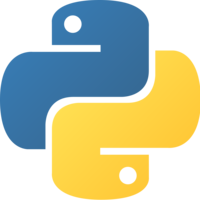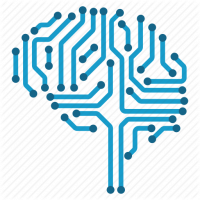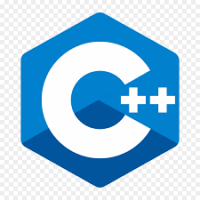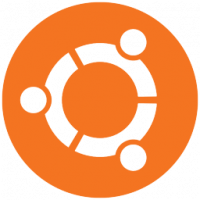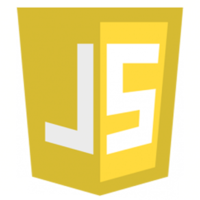- Bài 1: Giới thiệu Flutter
- Bài 2: Cài đặt Flutter
- Bài 3: Tạo ứng dụng Flutter đầu tiên
- Bài 4: Kiến trúc ứng dụng Flutter
- Bài 5: Giới thiệu ngôn ngữ Dart
- Bài 6: Widget trong Flutter
- Bài 7: Layout trong Flutter
- Bài 8: Gesture trong Flutter
- Bài 9: Quản lý trạng thái Sate trong Flutter
- Bài 10: Statefulwidget trong Flutter
- Bài 11: ScopedModel trong Flutter
- Bài 12: Navigator và Routing
- Bài 13: Animation
- Bài 14: Code với native Android
- Bài 15: Code với native IOS
- Bài 16: Giới thiệu về package
- Bài 17: REST API
- Bài 18: Khái niệm về Database
- Bài 19: Chuyển đổi ngôn ngữ
- Bài 20: Testing
- Bài 21: Xuất ứng dụng trong Flutter
- Bài 22: Công cụ phát triển
- Bài 23: Viết ứng dụng hoàn chỉnh
Bài 11: ScopedModel trong Flutter - Học lập trình Flutter cơ bản
Đăng bởi: Admin | Lượt xem: 11261 | Chuyên mục: Android
Trong bài trước chúng ta đã tìm hiểu cách quản lý trạng thái của widget bằng SatefullWidget, trong bài hôm nay chúng ta tìm hiểu cách quản lý trạng thái trong ứng dụng bằng ScopedModel
Flutter cung cấp một phương pháp đơn giản để quản lý trạng thái của ứng dụng sử dụng scoped_model package. Flutter package đơn giản là một thư viện với những phương thức được sử dụng nhiều lần. Chúng ta sẽ tìm hiểu kỹ về package trong Flutter ở các bài học tới.
scoped_model cung cấp 3 class chính cho phép quản lý trạng thái của ứng dụng một cách mạnh mẽ:sdf
Model
Model đóng gói trạng thái của một ứng dụng. Chúng ta có thể sử dụng nhiều Model (bằng việc kế thừa Model class) để quản lý trạng thái của ứng dụng. Model có một phương thức duy nhất là notifyListeners, nó được gọi bất cứ khi nào trạng thái của Model thay đổi. notifyListeners sẽ thực hiện các công việc cần thiết để cập nhật giao diện.
Ví dụ ta tạo một model là Product
class Product extends Model {
final String name;
final String description;
final int price;
final String image;
int rating;
Product(this.name, this.description, this.price, this.image, this.rating);
factory Product.fromMap(Map<String, dynamic> json) {
return Product(
json['name'],
json['description'],
json['price'],
json['image'],
json['rating'],
);
}
void updateRating(int myRating) {
rating = myRating; notifyListeners();
}
}ScopedModel
ScopedModel là một widget, chúng ta hiểu đơn giản nó là một tiện ích để chúng ta có thể dễ dàng chuyển Data Model từ widget cha xuống các widget con, cháu của nó. Ngoài ra nó còn có nhiệm vụ rebuild lại các widget con giữ các model mà trong trường hợp model này được cập nhật. Nếu cần nhiều hơn một Data Model thì chúng ta có thể sử dụng lồng ScopeModel. Dưới đây là hai dạng ScopedModel :
Single model :
ScopedModel<Product>(
model: item, child: AnyWidget()
)Multiple model
ScopedModel<Product>(
model: item1,
child: ScopedModel<Product>(
model: item2, child: AnyWidget(),
),
)ScopeModel.of là một phương thức dùng để lấy Data Model dưới ScopeModel. Và nó có thể được sử dụng khi Data Model thay đổi kể cá khi giao diện (UI) không thay đổi. Dưới đây là ví dụ khi ta thay đổi UI( đánh giá ) của một sản phẩm
ScopedModel.of<Product>(context).updateRating(2);ScopedModelDescendant
ScopedModelDescendant là một widget, nó lấy Data Model từ lớp cha và build lại UI bất kí khi nào Data Model thay đổi.
ScopedModelDescendant có 2 thuộc tính là builder và child. Child là phần UI không bị thay đổi và sẽ được chuyển cho hàm builder . Hàm buider sẽ nhận 3 đối số:
- Content :ScopedModelDescendant chuyển sang context của ứng dụng
- Child : Một phần của UI và không thay đổi dựa trên Data Model
- Model : Dưới đây là ví dụ tường minh
return ScopedModelDescendant<ProductModel>(
builder: (context, child, cart) => { ... Actual UI ... },
child: PartOfTheUI(),
);Bây giờ chúng ta sẽ sử dụng các ví dụ từ các bài học trước và sử dụng ScopeModel thay vì StatefulWidget :
- Tạo một ứng dụng Flutter mới với tên project tùy ý bạn, ở đây tôi sẽ sử dụng tên là product_scoped_model_app
- Sau đó thay thế các dòng code mặc định trong hàm main.dart bằng product_state_app code nhé
- Coppy các hình ảnh từ assets mà đã sử dụng trong các bài trước, tôi sẽ để link lại đây nhé ( https://vncoder.vn/bai-hoc/layout-trong-flutter-225 ) sau đó vào pubspec.yaml file tìm đến mục assets và dán vào
flutter:
assets:
- assets/floppy.jpg
- assets/iphone.jpg
- assets/laptop.jpg
- assets/pendrive.jpg
- assets/pixel.jpg
- assets/tablet.jpgBây giờ chúng ta phải sử dụng gói thư viện của bên thứ ba vì nó không có trong Framework của flutter
Bằng cách thêm Scope_model vào pubspec.yaml ởphần dependencies
dependencies: scoped_model: ^1.0.1Oke, bạn nên sử dụng version mới nhất nhé, cập nhật tại đây : https://pub.dev/packages/scoped_model
Bây giờ bạn hãy thay thế đoạn code mặc định(main.dart) bằng đoạn code của chúng tôi nhé
import 'package:flutter/material.dart';
void main() => runApp(MyApp());
class MyApp extends StatelessWidget {
// This widget is the root of your application.
@override
Widget build(BuildContext context) {
return MaterialApp(
title: 'Flutter Demo',
theme: ThemeData(primarySwatch: Colors.blue,),
home: MyHomePage(title: 'Product state demo home page'),
);
}
}
class MyHomePage extends StatelessWidget {
MyHomePage({Key key, this.title}) : super(key: key);
final String title;
@override
Widget build(BuildContext context) {
return Scaffold(
appBar: AppBar(
title: Text(this.title),
),
body: Center(
child: Text( 'Hello World', )
),
);
}
}Bạn nhớ import Scope_model vào main.dart nhé ^^
import 'package:scoped_model/scoped_model.dart';Giờ chúng ta sẽ tạo lớp Product quen thuộc, Product.dart là lớp chứa thông tin của sản phẩm Product
import 'package:scoped_model/scoped_model.dart';
class Product extends Model {
final String name;
final String description;
final int price;
final String image;
int rating;
Product(this.name, this.description, this.price, this.image, this.rating);
factory Product.fromMap(Map<String, dynamic> json) {
return Product(
json['name'],
json['description'],
json['price'],
json['image'],
json['rating'],
);
}
void updateRating(int myRating) {
rating = myRating;
notifyListeners();
}
}Tốt rồi, giờ chúng ta sẽ sử dụng thuộc tính notifyListeners để lắng nghe sự thay đổi của UI khi mà người dùng đánh giá
Chúng ta sẽ viết phương thức getProduct để tạo ra nội dung cho lớp Product
import product.dart in main.dart
import 'Product.dart';
static List<Product> getProducts() {
List<Product> items = <Product>[];
items.add(
Product(
"Pixel",
"Pixel is the most feature-full phone ever", 800,
"pixel.jpg", 0
)
);
items.add(
Product(
"Laptop", "Laptop is most productive development tool", 2000,
"laptop.jpg", 0
)
);
items.add(
Product(
"Tablet",
"Tablet is the most useful device ever for meeting", 1500,
"tablet.jpg", 0
)
);
items.add(
Product(
"Pendrive",
"Pendrive is useful storage medium",
100, "pendrive.jpg", 0
)
);
items.add(
Product(
"Floppy Drive",
"Floppy drive is useful rescue storage medium", 20,
"floppy.jpg", 0
)
);
return items;
}OK, tiếp tục chúng ta sẽ tạo một widget mới có tên là RatingBox và sử dụng Scope_model để support nhé
class RatingBox extends StatelessWidget {
RatingBox({Key key, this.item}) : super(key: key);
final Product item;
Widget build(BuildContext context) {
double _size = 20;
print(item.rating);
return Row(
mainAxisAlignment: MainAxisAlignment.end,
crossAxisAlignment: CrossAxisAlignment.end,
mainAxisSize: MainAxisSize.max,
children: <Widget>[
Container(
padding: EdgeInsets.all(0),
child: IconButton(
icon: (
item.rating >= 1
? Icon( Icons.star, size: _size, )
: Icon( Icons.star_border, size: _size, )
), color: Colors.red[500],
onPressed: () => this.item.updateRating(1),
iconSize: _size,
),
),
Container(
padding: EdgeInsets.all(0),
child: IconButton(
icon: (item.rating >= 2
? Icon(
Icons.star,
size: _size,
) : Icon(
Icons.star_border,
size: _size,
)
),
color: Colors.red[500],
onPressed: () => this.item.updateRating(2),
iconSize: _size,
),
),
Container(
padding: EdgeInsets.all(0),
child: IconButton(
icon: (
item.rating >= 3? Icon(
Icons.star,
size: _size,
)
: Icon(
Icons.star_border,
size: _size,
)
),
color: Colors.red[500],
onPressed: () => this.item.updateRating(3),
iconSize: _size,
),
),
],
);
}
}ở đây chúng ta sử dụng StatelessWidget thay vì StatefulWidget.Cũng như vậy, chúng ta đã sử dụng phương thức Product model’s updateRating để set giá trị phần đánh giá
tiếp theo chúng ta sẻ điều chỉnh widget ProductBox để làm việc với lớp Product, ScopedModel và ScopedModelDescendant
class ProductBox extends StatelessWidget {
ProductBox({Key key, this.item}) : super(key: key);
final Product item;
Widget build(BuildContext context) {
return Container(
padding: EdgeInsets.all(2),
height: 140,
child: Card(
child: Row(
mainAxisAlignment: MainAxisAlignment.spaceEvenly,
children: <Widget>[
Image.asset("assets/" + this.item.image),
Expanded(
child: Container(
padding: EdgeInsets.all(5),
child: ScopedModel<Product>(
model: this.item,
child: Column(
mainAxisAlignment: MainAxisAlignment.spaceEvenly,
children: <Widget>[
Text(this.item.name,
style: TextStyle(fontWeight: FontWeight.bold)),
Text(this.item.description),
Text("Price: " +
this.item.price.toString()),
ScopedModelDescendant<Product>(
builder: (context, child, item)
{ return RatingBox(item: item); }
)
],
)
)
)
)
]
),
)
);
}
}Các bạn có thể thấy chúng ta đã đóng gói widget RatingBox bên trong ScopedModel và ScopedModelDecendant
Bây giờ chúng ta sẽ thay đổi widget MyHomePage để sử dụng widget ProductBox như sau
class MyHomePage extends StatelessWidget {
MyHomePage({Key key, this.title}) : super(key: key);
final String title;
final items = Product.getProducts();
@override
Widget build(BuildContext context) {
return Scaffold(
appBar: AppBar(title: Text("Product Navigation")),
body: ListView.builder(
itemCount: items.length,
itemBuilder: (context, index) {
return ProductBox(item: items[index]);
},
)
);
}
}Ở đây chúng ta đã sử dụng ListView.builder để xây dựng động danh sách Product
Vậy là xong, dưới đây là toàn bộ code được sử dụng :
Product.dart
import 'package:scoped_model/scoped_model.dart';
class Product extends Model {
final String name;
final String description;
final int price;
final String image;
int rating;
Product(this.name, this.description, this.price, this.image, this.rating);
factory Product.fromMap(Map<String, dynamic> json) {
return Product(
json['name'],
json['description'],
json['price'],
json['image'],
json['rating'],
);n
} void cn "Laptop is most productive development tool", 2000, "laptop.jpg", 0));
items.add(
Product(
"Tablet"cnvn,
"Tablet is the most useful device ever for meeting", 1500,
"tablet.jpg", 0
)
);
items.add(
Product(
"Pendrive",
"Pendrive is useful storage medium", 100,
"pendrive.jpg", 0
)
);
items.add(
Product(
"Floppy Drive",
"Floppy drive is useful rescue storage medium", 20,
"floppy.jpg", 0
)
)
; return items;
}
main.dart
import 'package:flutter/material.dart';
import 'package:scoped_model/scoped_model.dart';
import 'Product.dart';
void main() => runApp(MyApp());
class MyApp extends StatelessWidget {
// This widget is the root of your application
@override
Widget build(BuildContext context) {
return MaterialApp(
title: 'Flutter Demo',
theme: ThemeData(
primarySwatch: Colors.blue,
),
home: MyHomePage(title: 'Product state demo home page'),
);
}
}
class MyHomePage extends StatelessWidget {
MyHomePage({Key key, this.title}) : super(key: key);
final String title;
final items = Product.getProducts();
@override
Widget build(BuildContext context) {
return Scaffold(
appBar: AppBar(title: Text("Product Navigation")),
body: ListView.builder(
itemCount: items.length,
itemBuilder: (context, index) {
return ProductBox(item: items[index]);
},
)
);
}
}
class RatingBox extends StatelessWidget {
RatingBox({Key key, this.item}) : super(key: key);
final Product item;
Widget build(BuildContext context) {
double _size = 20;
print(item.rating);
return Row(
mainAxisAlignment: MainAxisAlignment.end,
crossAxisAlignment: CrossAxisAlignment.end,
mainAxisSize: MainAxisSize.max,
children: <Widget>[
Container(
padding: EdgeInsets.all(0),
child: IconButton(
icon: (
item.rating >= 1? Icon( Icons.star, size: _size, )
: Icon( Icons.star_border, size: _size, )
),
color: Colors.red[500],
onPressed: () => this.item.updateRating(1),
iconSize: _size,
),
),
Container(
padding: EdgeInsets.all(0),
child: IconButton(
icon: (item.rating >= 2
? Icon(
Icons.star,
size: _size,
)
: Icon(
Icons.star_border,
size: _size,
)
),
color: Colors.red[500],
onPressed: () => this.item.updateRating(2),
iconSize: _size,
),
),
Container(
padding: EdgeInsets.all(0),
child: IconButton(
icon: (
item.rating >= 3 ?
Icon( Icons.star, size: _size, )
: Icon( Icons.star_border, size: _size, )
),
color: Colors.red[500],
onPressed: () => this.item.updateRating(3),
iconSize: _size,
),
),
],
);
}
}
class ProductBox extends StatelessWidget {
ProductBox({Key key, this.item}) : super(key: key);
final Product item;
Widget build(BuildContext context) {
return Container(
padding: EdgeInsets.all(2),
height: 140,
child: Card(
child: Row(
mainAxisAlignment: MainAxisAlignment.spaceEvenly,
children: <Widget>[
Image.asset("assets/" + this.item.image),
Expanded(
child: Container(
padding: EdgeInsets.all(5),
child: ScopedModel<Product>(
model: this.item, child: Column(
mainAxisAlignment: MainAxisAlignment.spaceEvenly,
children: <Widget>[
Text(
this.item.name, style: TextStyle(
fontWeight: FontWeight.bold
)
),
Text(this.item.description),
Text("Price: " + this.item.price.toString()),
ScopedModelDescendant<Product>(
builder: (context, child, item) {
return RatingBox(item: item);
}
)
],
)
)
)
)
]
),
)
);
}
}Các bạn hãy thử chạy và xem kết quả. Nó cơ bản hoạt động giống ví dụ trước nhưng ở đây có sử dụng thêm khái niệm Scope_model.
Scope_model - chúng ta có thể hiểu đơn giản nó là một framework , ví dụ khi bạn code "thô", lúc data model thay đổi, ở hàm setState() thay vì rebuild lại tất cả các widget (Btn, txt, ..) thì sẽ phạm phải quy tắc Single Responsibility thì Scope_model được sinh ra với mục đích chỉ rebuild data model bị thay đỏi thay vì rebuild tất cả widget
Cảm ơn các bạn đã theo dõi, chúc các bạn học tốt ^^

Theo dõi VnCoder trên Facebook, để cập nhật những bài viết, tin tức và khoá học mới nhất!
- Bài 1: Giới thiệu Flutter
- Bài 2: Cài đặt Flutter
- Bài 3: Tạo ứng dụng Flutter đầu tiên
- Bài 4: Kiến trúc ứng dụng Flutter
- Bài 5: Giới thiệu ngôn ngữ Dart
- Bài 6: Widget trong Flutter
- Bài 7: Layout trong Flutter
- Bài 8: Gesture trong Flutter
- Bài 9: Quản lý trạng thái Sate trong Flutter
- Bài 10: Statefulwidget trong Flutter
- Bài 11: ScopedModel trong Flutter
- Bài 12: Navigator và Routing
- Bài 13: Animation
- Bài 14: Code với native Android
- Bài 15: Code với native IOS
- Bài 16: Giới thiệu về package
- Bài 17: REST API
- Bài 18: Khái niệm về Database
- Bài 19: Chuyển đổi ngôn ngữ
- Bài 20: Testing
- Bài 21: Xuất ứng dụng trong Flutter
- Bài 22: Công cụ phát triển
- Bài 23: Viết ứng dụng hoàn chỉnh
